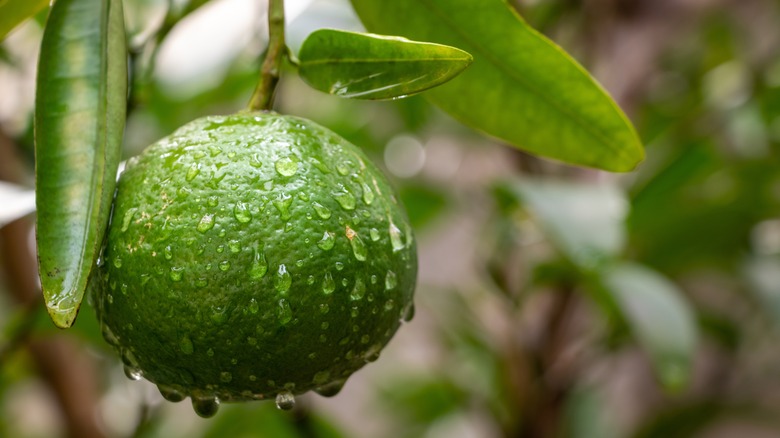Oranges Aren't Always Orange, Despite Their Name
Which came first, the color orange or the fruit of the same name? Well, we daresay that there were orange-colored things on the planet long before citrus evolved, and orange pigments have been used in art as far back as ancient Egypt. Back to our etymological question, however, it turns out that the color takes its name from the fruit as opposed to vice-versa. Apparently, the Arabic word "nāranj" evolved into the French "une norenge" and eventually into the English "orange."
The oranges that we typically see in the grocery store are, of course, a rather vivid shade of orange, one that turns out to be surprisingly stable. While the colors of many foods fade when they're cooked, oranges remain orange. Unless, of course, they're not orange at all. Blood oranges are more of a purplish/reddish color, thanks to the flavonoids they contain, but even other types of oranges can actually owe their orange color to artifice rather than nature.
All oranges start out with green skins
When is an orange not orange? This can happen when that orange is grown in a warm climate. But wait, you say, aren't all oranges grown in warm climates? It's not like citrus groves are something you see in Maine or Wisconsin, after all. Well, yes, but some climates are warmer than others. In a typical growing climate, unripe oranges will be green, but as the oranges mature and the temperatures cool down, the chlorophyll tinting the orange skins green will die and the oranges obtain their characteristic orange hue. If the temperature should go back up again, however, or should the oranges be grown in a tropical climate where it never gets cold enough to kill the chlorophyll, the oranges may stay green.
In Mexico, where most oranges are grown in-country, some enterprising orange vendors have been known to charge higher prices for the green ones as if they were something extra special (via Mexico News Daily), but for the ones sold in the U.S., ethylene gas or even artificial coloring are often used to restore the orange skin we're accustomed to. Should you ever see a green-skinned orange, though, you needn't think there's anything wrong with it, as long as the green isn't in the form of mold. A naturally green-skinned orange will taste just the same as an orange-skinned one and will have the added benefit of not having been exposed to artificial color-changing agents.

